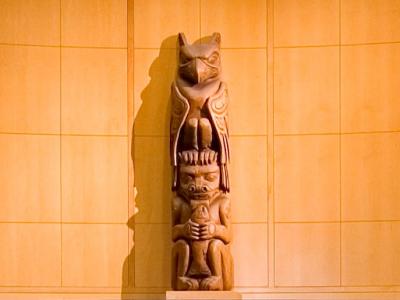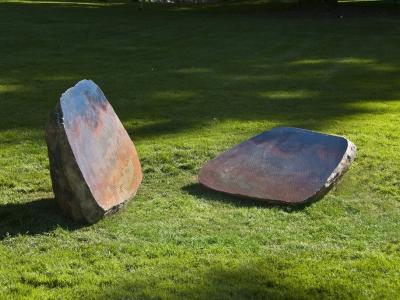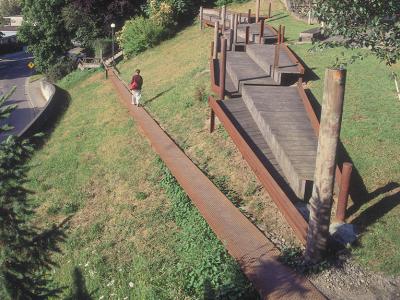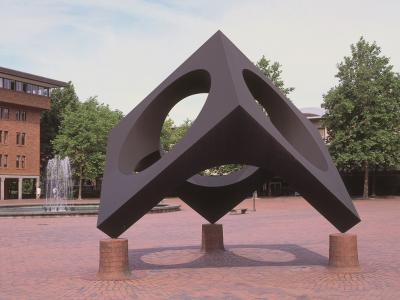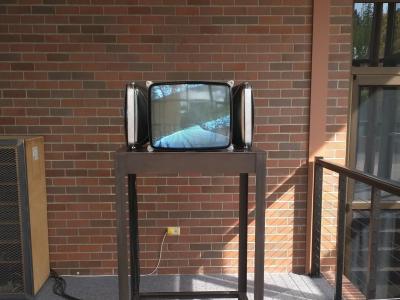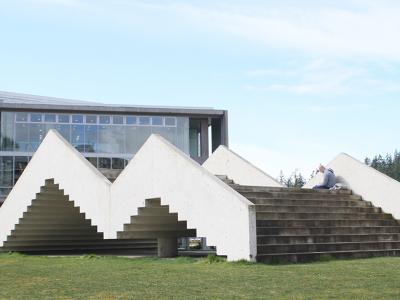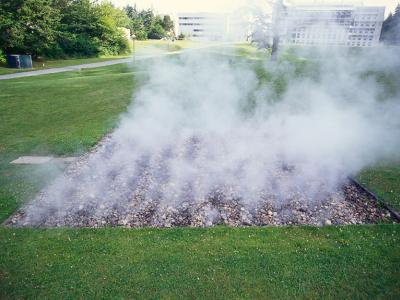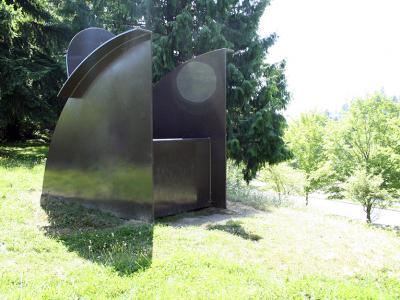John Keppelman, Garapata, 1978
John Keppelman, 1978.
Painted aluminum plate. 10' h. x 7' w.
Photo credit: David Scherrer
Gift of Annie Dillard and Gary Clevidence, 1985.
Description
Working with an automatic method of cutting and folding paper, John Keppelman arrived at the simple shapes of this sculpture. Because these shapes suggested a sense of soaring motion, he named it "Garapata" after a dramatic California setting, a river and canyon which intersects with the Pacific Ocean which he knew in his youth.
Underlying Trakas' carefully paced movement is a sense of adventure between landings. In Keppelman's Garapata (1978) there is a sense of soaring above the ordinary. The work comes from a series where Keppelman was using an automatic method of cutting and folding paper to arrive at shapes for sculpture. In Keppelman's sculpture certain traditions mingle with flights of fancy. The art of folding paper to form a natural shape is a part of Japanese customs, the subconscious game of the surrealists, and the entertainment of schoolboys. Since Keppelman knew the writer Annie Dillard, it is useful to compare her writing with Keppelman's search.
Full text
In ''Seeing,'' a chapter from her book Pilgrim at Tinker Creek, she is interested in the difference between the ''naturally obvious'' and an artificial construction. Thus, she could write: ''The secret of seeing is to sail on solar wind. Hone and spread your spirit till you yourself are a sail, whetted, translucent, broadside to the nearest puff." Working in his automatic mode, Keppelman felt that his paper shapes suggested a sense of flight. After he changed his paper study into a white aluminum work, he named the sculpture after a dramatic California setting, a river and a canyon intersecting with the Pacific Ocean.
While his concentration on strictly formal shapes - plane against plane - brings to the foreground his memory of a particular place, Keppelman's choices for sites also parallel Dillard's writing about ''seeing." As she states: ''I used to be able to see flying insects in the air. I'd look ahead and see, not the row of hemlocks across the road, but the air in front of it. My eyes would focus along that column of air, picking out flying insects.'' Originally sited against an embankment of trees, Garapata was moved due to construction of the new Chemistry building. Both the original site of the ''ridge'' and its present location at the edge of a row of trees adjacent to the south campus road allow a frontal view; thus, nature provides a wall to accent the simple shapes of flight.
© Sarah Clark-Langager

